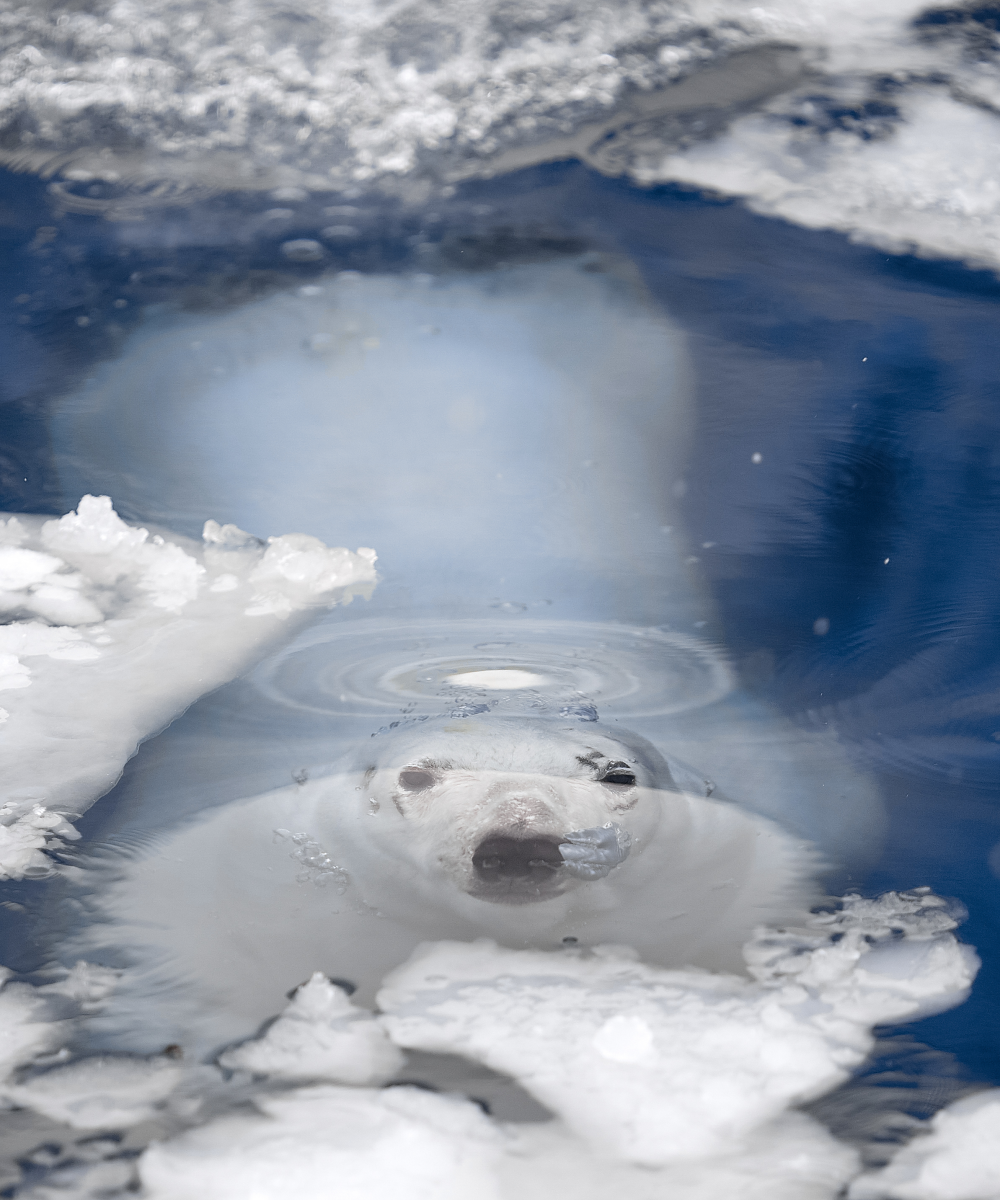Science fiction is filled with cool gadgets, but sometimes real life mirrors the movies as scientists invent new toys for monitoring and moving around. Just look at Polar Bears International (PBI), who recently launched two very cool pieces of equipment: Bear-Dar, and their shiny new EV Tundra Buggy One.
After years of testing in Winnipeg and Churchill, their artificial polar bear detection radar system – AKA, Bear-Dar – is being rolled out at the Eureka research station in Northern Canada. Its goal is to alert communities and remote camps when a polar bear wanders a little too close for comfort, something that can protect human lives while also protecting polar bears.
Are polar bears dangerous?
As one of Earth’s apex predators, polar bears have evolved to become incredible ambush hunters. Oftentimes they’ll lurk near an airhole in the iceshelf and wait until a seal surfaces, then pounce (others, they’ll apparently bonk walruses on the head with rocks).

A polar bear lurks by an air hole waiting for a seal.
Image credit: Evgeniyqw / Shutterstock.com
The strength and smarts it takes to be successful when food is hard to come by can become a little problematic when humans and polar bears cross paths. This is where an early warning system like Bear-Dar can save lives, by keeping humans and polar bears safe and – crucially – separate.
“Bear-dar is a flagship for how we might use technology broadly to engage in conservation issues for polar bears and other threatened species,” said PBI’s Senior Director of Research and Policy, Geoff York, to IFLScience.
Protecting polar bears
The reality is that humans pose a greater danger to polar bears than they do to us because of the direct and indirect effect we have on their lives. Perhaps most significant of all is the influence of climate change and how it alters ecosystems.
We need to address the root cause: warming temperatures are reducing sea ice, driven by our burning of fossil fuels for energy.
Geoff York
Research released earlier this year found that the body condition of female polar bears is worsening, and fewer of them are becoming pregnant. Between 1982 and 1990, around 82 percent of four-year-old females were pregnant, but from 1991 to 2021 that percentage dropped to just 55 percent. Turning the tide on this worrying statistic depends on our commitment to reducing the anthropogenic factors contributing to longer ice-free periods in Hudson Bay.
“We need to address the root cause: warming temperatures are reducing sea ice, driven by our burning of fossil fuels for energy,” said York. “In the short term, we can also do more to protect moms and cubs, along with the identification and protection of maternal denning areas.”
Predators = A healthy ecosystem
Predators are vital to supporting healthy ecosystems. Not only do they directly predate on animals that might otherwise dominate an ecosystem, but they leave behind resources for scavenging species, promoting biodiversity. The same is true for everything from lions to polar bears.
“Depending on the season and region, Arctic foxes are likely the most reliant on scavenging as they will follow polar bears well out onto the sea ice and become fairly dependent on polar bear prey remains,” said York. “Ravens, scavenging seabirds, and Arctic raptors will also utilize carrion provisioned by polar bears. Wolverine would be an opportunistic user of carrion closer to shore or on land.”
We want to keep ourselves well-stocked in bears, then, but continuing to study them and share those findings with the world requires the right kit: enter, EV Tundra Buggy One. It marks the first-ever fully electric Tundra Buggy to have been built from the ground up (goodbye, diesel engine), creating a zero-emission vehicle that’s proving clean energy can thrive in subzero. It will provide a close-up view of this vulnerable population of polar bears that’s declined by around 50 percent since 1979, something that’s even more crucial in light of their declining birth rates.
“EV Tundra Buggy One, designed in collaboration with Frontiers North Adventures and built by Northern Noble Ltd, will allow Polar Bears International to continue to bring polar bears and the Arctic to people around the world through our multimedia outreach, education, and partnership with media outlets globally,” said York.
And from the sci-fi to the simple, PBI are also working with the Bear Smart Working Group and the town of Churchill to roll out bear-resistant bins, electric fencing, and improved waste management. You can find out about all of this and more as part of Polar Bear Week 2025 that runs from November 2 to 8, with this year’s event celebrating innovation and co-existence.
After all, polar bears may be Earth’s largest land predator, but all they need from us is to be good neighbors.
Source Link: Are Polar Bears Dangerous? How “Bear-Dar” Can Keep Polar Bears And People Safe (And Separate)